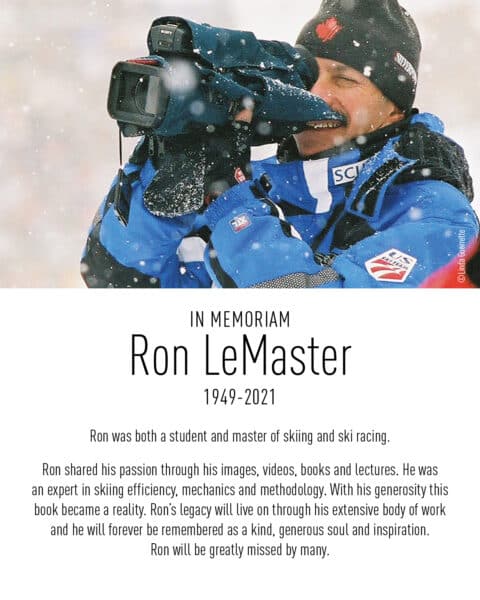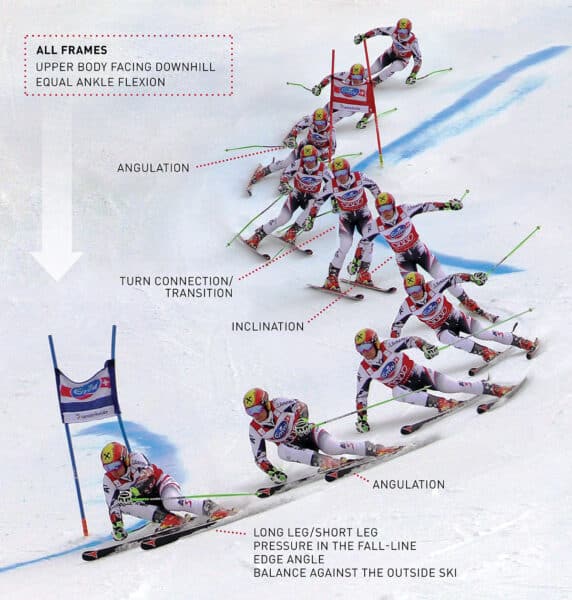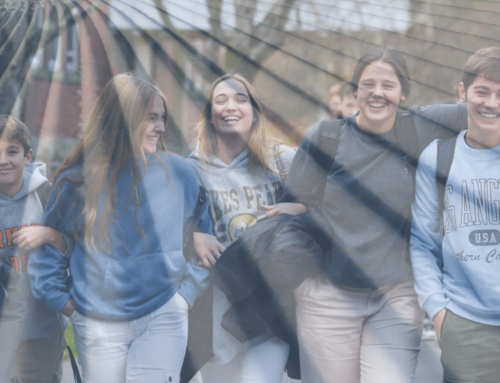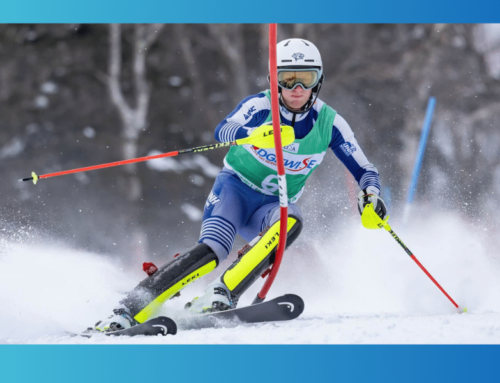Mastering Pressure in the Fall-Line: Key Ski Racing Technique Explained
Alice Robinson Sölden 2021 Photo: GEPA Pictures
The Far West Development Initiative (FWDI), supported by Melissa and Martin Huml, created The Young Skier’s Guide: Fundamentals of Ski Racing to support the development of U14 racers. Fortunately, it benefits all ages. Ron LeMaster’s stunning photos and videos lead the teaching. Additionally, Ron Kipp’s text offers valuable support. Ski Racing Media is pleased to publish nine articles highlighting the book’s key concepts. The concept covered in this article is “Pressure in the Fall-Line,” the seventh in the series.
The Role of Photos and Photomontages
The amazing Ron LeMaster photos aim to immerse athletes in the images of ski racers, helping them internalize the technique through their neuromuscular system. Athletes then replicate the “technique” their coaches teach, aligned with these concepts.
The Nine Essential Concepts
- Upper Body Facing Downhill
- Equal Ankle Flexion
- Turn Connection/Transition
- Inclination
- Angulation
- Long Leg/Short Leg
- Pressure in the Fall-Line
- Edge Angle
- Balance Against the Outside Ski
Click on images to enlarge.
Pressure in the Fall-line
Explanation:
Changing direction in a ski turn happens when the skier applies pressure to the ski in the fall-line. This pressure can rebound or project the skier toward the new turn, like a ball bouncing off a wall.
What is pressure?
Pressure is defined as force over area. Tipping a ski up on the edge reduces the area and increases the pressure. This decreases the amount of base in the snow, which increases pressure.
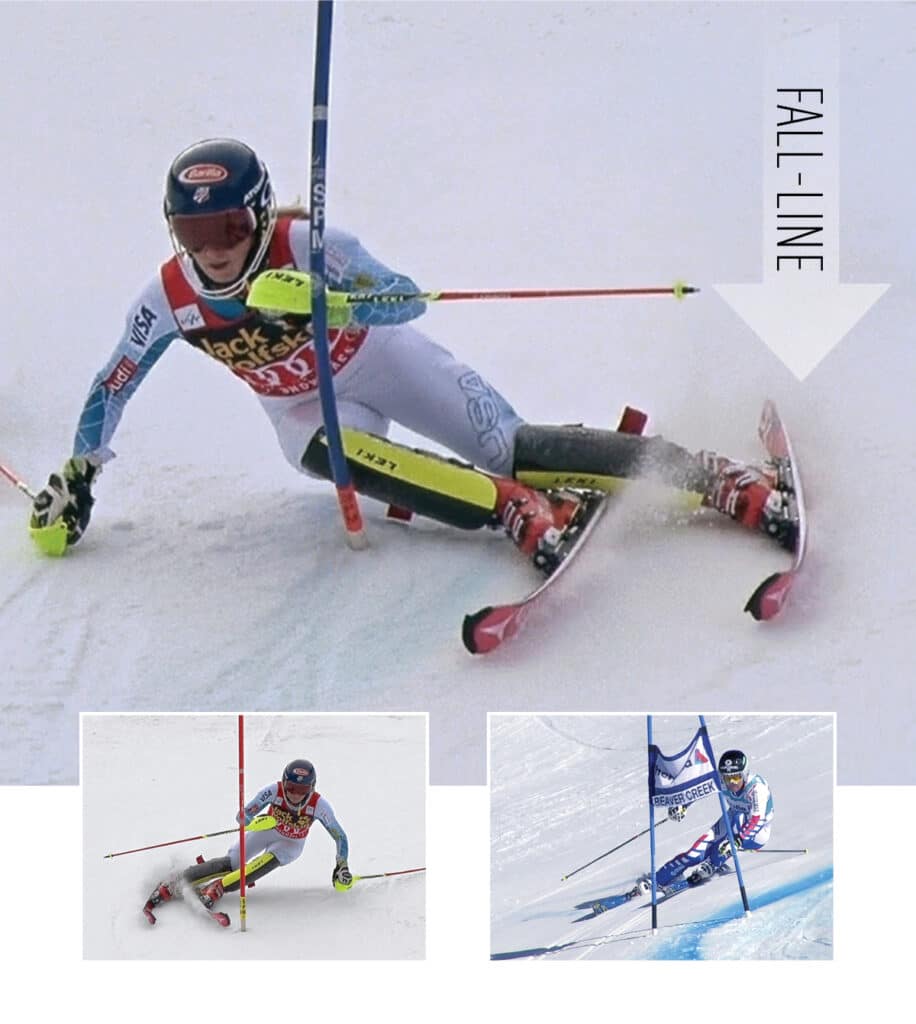
What is the fall-line?
A fall-line is the path a ball might roll down a slope. A fall-line or ball may roll down and also to the left or right, which is a double fall-line. In the strictest sense, the fall-line will coincide with the gate passage.
When to pressure?
Pressure may start immediately after the transition or later. In either case, the maximum pressure should be in the fall-line. The turn must be round, with the bottom half mirroring the top half.
Is early pressure the key?
“Early pressure” is a common cliché in ski racing. Once the racer pressures the ski, they commit to the radius and turn placement. This can be good or bad.
The length of pressure:
Pressure should be directed and maximized in the fall-line, but it can start higher and extend lower through the turn. Conversely, delaying pressure can shorten the radius.
What about late pressure?
Pressure applied later causes the skier to move uphill instead of toward the new turn.
This late pressure can cause the ski racer to explode out of the bottom of the turn. On the World Cup, this is often called “going to the red room” or “ending up in the red B-net.”
Impulse is important:
Impulse is a physics term that correlates force and time. It increases when you apply force for less time. We look to apply this impulse of pressure in the fall-line.
Impulse changes with skill level:
Younger, less skilled skiers are usually weaker than more élite racers. To accomplish round turns with pressure in the fall-line, the successful younger skier draws the pressure out over a longer distance. Meanwhile, the elite World Cup skier will ski a straighter line. They will delay the turn impulse, resulting in a shorter radius turn. This can be over 2Gs of force or two times their body weight.
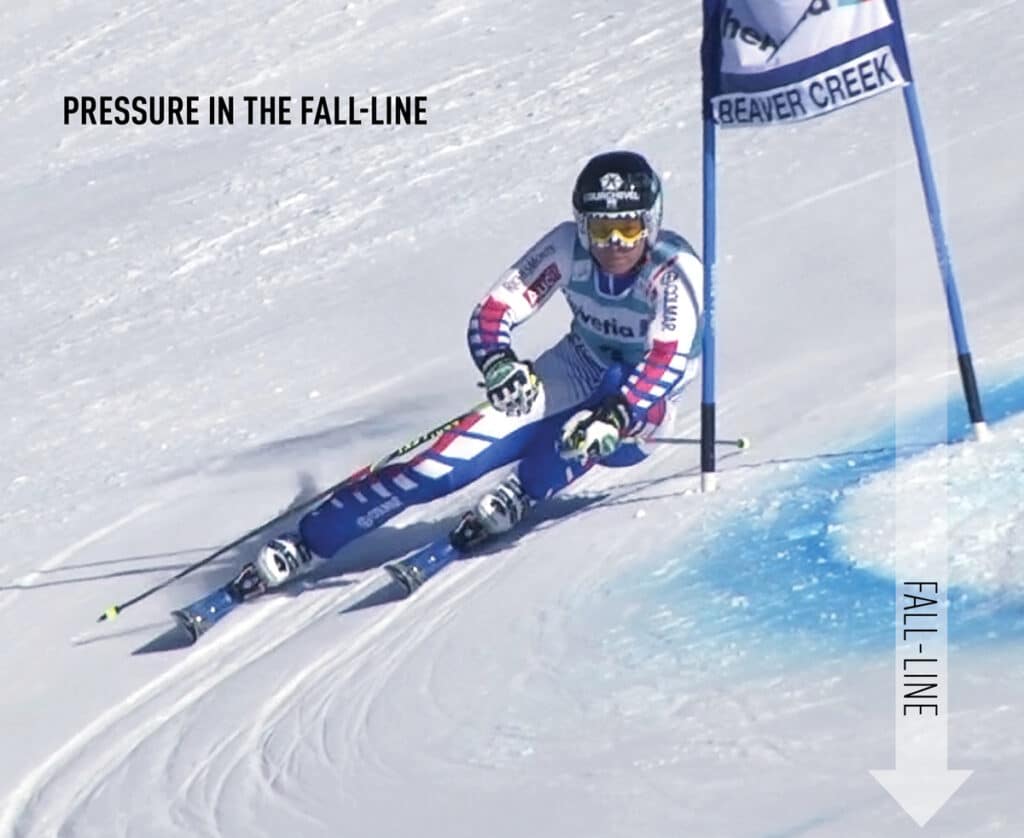

Turn shape:
The impulse or max pressure phase should be round. Any deviation from a round impulse will cause the ski to re-establish itself, creating a new path and reducing speed.
Carved turn:
You must use pressure to arc or carve in the fall-line, which means the ski tail must follow the tip on the same path..
Exceptions:
A turn with a lot of direction change, like a delay or a turn on a sidehill, and the last turn before the finish.
What to look for:
The maximal bend in the ski, angulation, and highest edge angle coinciding with the fall-line.
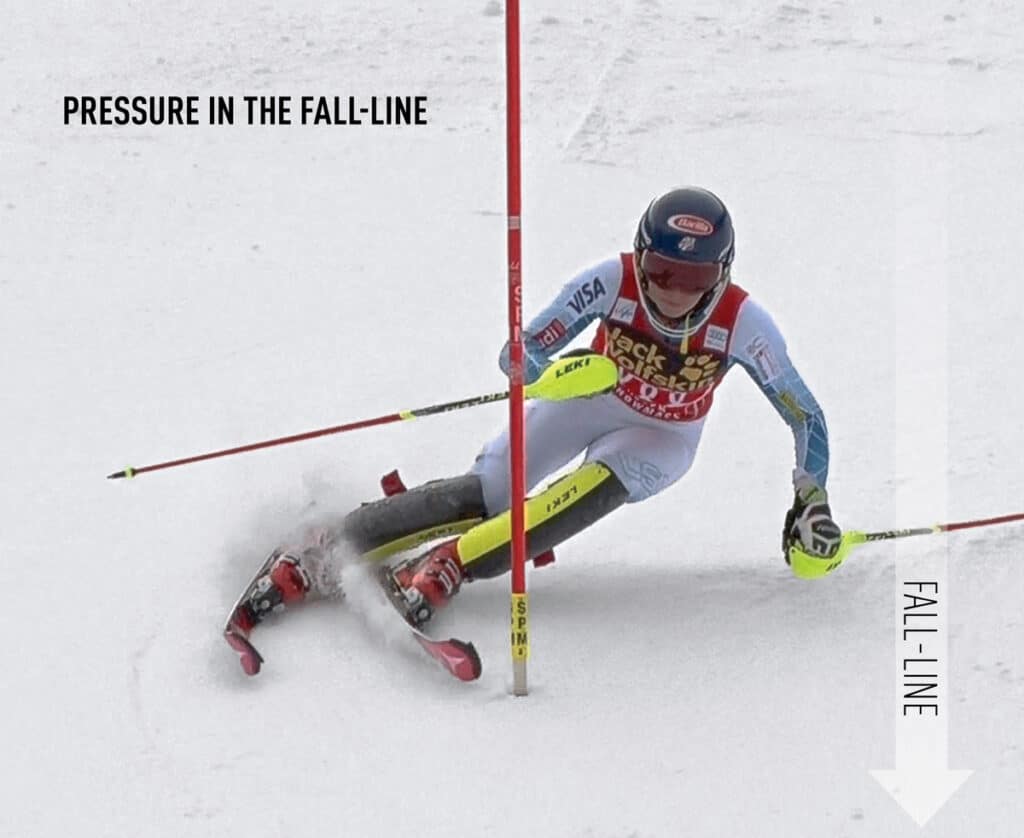
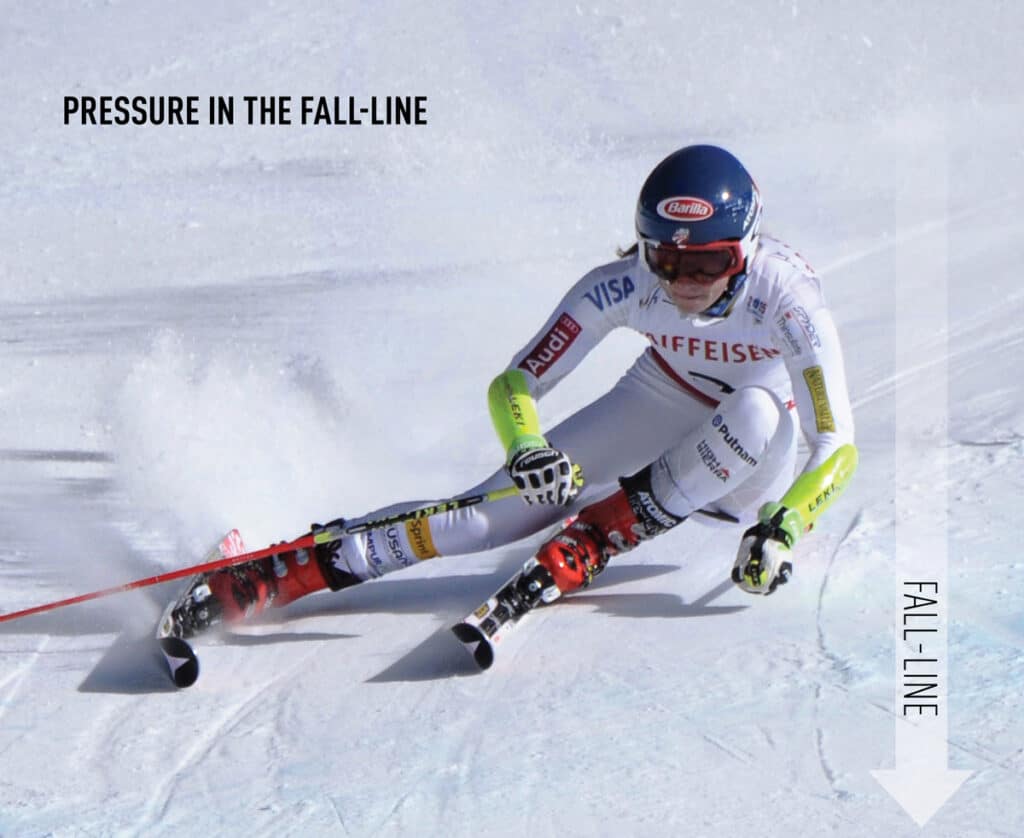
Why is late pressure not desirable?
With the high forces in ski racing, the athlete will rebound up the hill if the pressure is later.
What it looks like if pressure is later than desired:
They extend or tighten the turn after the fall-line or gate. The athlete bounces back up the hill.
If not, what happens?
The skier will either explode uphill or need to reduce the edge angle, which results in a skidded turn.
Drills:
Apex drill, skiing on flat terrain, tightening the turning arc, phantom gate clear.
Talking points or cues:
Watch your snow spray, listen to your skis, and feel the direction your body projects after the turn.
